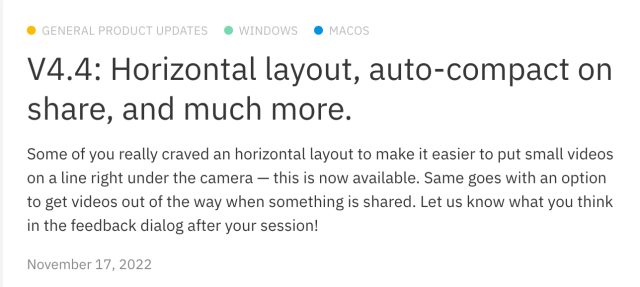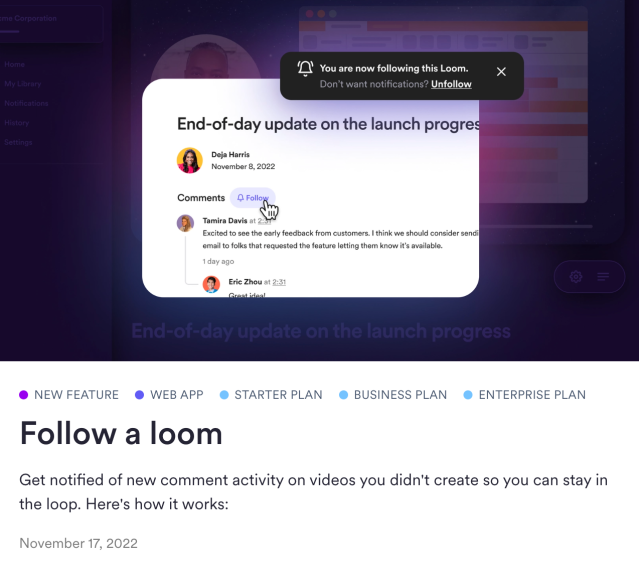Release notes template
Create release notes from a list of completed tickets with Writer
Browse more templates
Try other templates
- Answer an FAQ
- Blog outline
- Blog post
- Blog title
- Case study
- eCommerce email
- Email subject line
- Email subject line ideas
- Error message
- FAQ
- Facebook ads
- Google Ads
- Help center article
- Job description
- Messaging ideas
- Press release
- Product description
- Push notification
- Recruitment email
- Release notes
- Sales email
- Summary
- Tooltip shortener
Unlock the power of AI-generated content
How to write compelling release notes (with a free template)
After spending time, effort and resources debugging a software problem, the last and final step is to share the good news with the rest of the world.
Release notes are a crucial part of your product’s documentation and are a great way to communicate with your users.
Unfortunately, many release notes are dry, boring, and difficult to read. But don’t worry, we’ve got the solution for you.
We’ll show you how to write compelling release notes that excite your users about new features instantly by using Writer release notes templates.
Why are release notes important?
Release notes are technical pieces of documentation that are created and distributed with new software updates or bug fixes.
Internally, release notes complement the software development process. They help communicate software changes and provide a valuable record of procedures for future developers or users who need to understand why a particular change was made.
Externally, they have several uses, such as:
- Updating users: keeps users updated on bug fixes and new software features.
- Standing out from the competition: release notes allow companies to boast about their new products and differentiate their development efforts from competitors. Additionally, they’re a great opportunity to show users you are listening to their feedback.
- Supporting maintenance documentation: release notes on bug fixes help keep maintenance documentation up to date, and ensure help center resources are up to date on how to resolve common issues.
- Identifying problem areas: release notes can help you quickly spot problem areas or bug fixes that need additional resources and user training.
What to include in your release notes
Release notes are your opportunity to communicate directly with your users about what’s new, what’s changed, and what they need to do to upgrade their current software version.
When you’re writing release notes, there are a few things you’ll want to include:
- Software release date: software dates help users understand how current the software is.
- Software version number: the software version informs teams and users which update they are using or which version to download next.
- New features: this is your chance to show your users what’s new and improved in the latest version. Include any screenshots or videos that’ll help illustrate the new features.
- Bug fixes: by pinpointing the fixed problems, you show your users that you’re listening to their feedback and working hard to improve the software.
- Breaking changes: if you’re changing how an API works, that’d be a breaking change. Be sure to mention any workarounds or solutions for any breaking changes.
- Instructions for upgrading: fixing problems is a great start, but you need to guide your users on how to upgrade to a new software.
- A call to action (CTA): end with a strong CTA for users to know exactly what to do next, like “Download the new version now!” Or “Upgrade today!”
That’s it! With these items, you’ll be able to write compelling release notes that’ll inform and excite your users.
Make it easy using Writer’s release notes template
Optimizing the content of a release note to be comprehensive is a time-consuming and important task. However, with Writer’s release note templates, you can use the power of AI to create engaging and accurate release notes that are ready to publish instantly.
Create a release note by simply adding your ticket number in the input template. And, you can add as many tickets as you’d like to save time!
Here’s an example:
Input ticket:
WXT-3485: user names sometimes load incorrectly on the team share list.
Writer’s result
Bug fixes:
We fixed a bug where user names would sometimes load incorrectly on the team share list.
Benefits of using Writer’s release template
Release notes can be tricky to master. However, Writer’s release note template can instantly help you create informative and engaging release notes.
Here are a few benefits of using Writer’s template:
- Optimize release notes to highlight key feature improvements and bug fixes
- Consistent structure throughout all the release notes that follows brand guidelines and tone
- Avoid writer’s block by instantly having an engaging release note with accurate information
- Save time and publish all your new releases notes instantly
Try Writer for yourself, and see how automated release notes can improve the quality of your release notes instantly.
Once you’ve generated your release notes, we’ve got a list of best practices to keep in mind before publishing your news!
5 best practices to create engaging release notes
We’ve come up with a list of best practices to help you write release notes that are both informative and engaging.
After all, release notes are often the first (and sometimes only) thing your users will read to learn about new features and how it affects their user experience.
Here’s a list of best practices for the next time you create a release note:
1.Keep your release notes concise
Avoid long and irrelevant descriptions. Instead, cut to the chase and communicate the most significant change and focus on the most important information.
This will help your team understand the impact of the change and the significance of the new information.
Here’s an example of how CoScreen, a screen-sharing tool for engineers, formats their release notes with information upfront.

2. Be brand consistent
Use your brand guidelines and a template structure in all your release notes. The goal is for your users to easily recognize your release notes as coming from your company. That means using the same logo, tone, and structure from one release to the next.
Here’s an example of how Mural keeps their users updated on new products, while adding their own brand identity with emojis, company language, and format throughout their release notes.

3. Keep content scannable
Make sure your release notes are skimmable and easy to understand. You can achieve this by using bulleted lists to break up your content into smaller, more digestible chunks.
This helps the reader find the information they’re looking for quickly and efficiently, without having to wade through a sea of text.
Here’s an example of how Stripe, an online payment platform, uses clear and concise release notes to inform their users of new updates.

4. Include links to relevant resources
If your new update requires user action, it’s good practice to include any necessary information that complements a new feature, such as documentation or training resources. This allows users to feel satisfied and understand new updates.
Here’s an example of how GitHub includes helpful resources in their release notes to further instruct and guide users.

5. Add helpful media
Include images, videos, or screenshots to illustrate key points. Adding media to release notes helps visually complement instructions for complex concepts. Moreover, for new features, media helps onboard users and improve their user experience by avoiding misunderstandings with new functions.
Here’s an example of how Loom, a video sharing platform, includes visuals in their release notes to help users immediately understand the new “follow a loom” feature.

Following these best practices will help you write release notes that are both informative and engaging.
If you want to save time and gain inspiration, give Writer’s release notes template a try!

